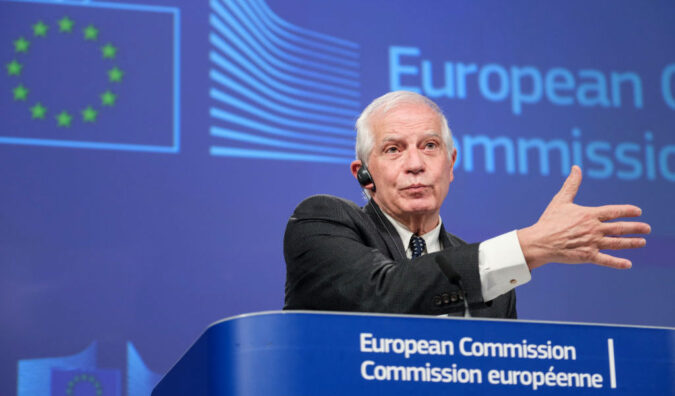The European Commission previewed a proposal this week to create a €100 billion, or about $109 billion, defense fund to build out the bloc’s military industrial base, but earned criticism from some European leaders.
The proposal is aimed at making the European Union more self-reliant in providing arms, ammunition, and defense technology to its members. Officials backing the proposal said the fund is necessary to counter Moscow, a major concern of E.U. bloc members after Russia invaded Ukraine two years ago.
“In response to Russia’s aggression against Ukraine, the E.U. must bolster its defense capabilities,” E.U. foreign policy chief Josep Borrell said recently.
The plan would require unanimous approval from E.U. member countries. French President Emmanuel Macron has long supported a more centralized approach to defense from the E.U. Many of the bloc’s members have expressed skepticism at the proposal, however.
German Defense Minister Boris Pistorius has previously suggested that a centralized E.U. defense fund would be too impractical to work. Other officials, such as Austrian MEP Harald Vilimsky, are wary of centralizing too much national security authority with the bloc.
“If the centralists have their way, we will have an E.U. army tomorrow, with an E.U. defence minister and EU headquarters, all under the umbrella of NATO,” he told The European Conservative.
The plan was introduced with an initial starting pot of about $1.5 billion, a small sum relative to its goal and the cost of funding a military, generally. Officials did not propose a clear mechanism for funding the European Defence Investment Program (EDIP), as the fund has been called, though Borrell did suggest this week that some of the money could be gained from siezed Russian assets.
“If we agree that these assets can be used to support Ukraine’s reconstruction, it could also be used to avoid Ukraine’s destruction, and its means to increase military capacities or the defense technological base of Ukraine,” Borrell said.
The EDIP, if implemented, would redirect billions of dollars away from the U.S. defense industry toward building up the continent’s own military-industrial complex. A French national security think tank, known as IRIS, found that the E.U. relies on foreign countries for the vast majority of its military manufacturing, with the United States being by far the bloc’s largest supplier.
“The value of defence acquisitions announced by EU countries from the start of the [Ukraine-Russia] war to June 2023 is of just above €100 billion. Over the 12 months from June 2022 to June 2023, they amounted to €75 billion, compared with €52 billion euros for the year 2021,” the September 2023 report said. “From this total, 78% is being procured from outside the EU, including 80% from the US, 13% from South Korea, 3% each from the UK and Israel, and 1% from other countries. This leaves €21 billion for EU countries themselves. Alone, the US accounts for 63% of EU countries’ acquisition plans.”
The proposed EDIP plan would redirect much of Europe’s military spending toward building up a local national security industry over the next decade. The commission’s proposed timeline aims to have half of Europe’s defense spending local by 2030, increased to 60% by 2035.

